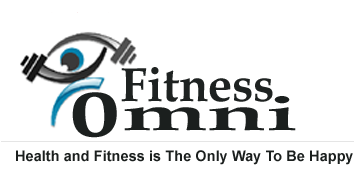Author Bio: Sally Moss is the founder of Strength Ambassadors. She has been voted one of the 10 Most Influential Women in the Strength and Conditioning World and appears in the list of Top 100 Most Influential Personal Trainers.
When it comes to our workout programmes, we all want to know the best exercises or accessories to add in that will exemplify our efforts.
Whether our aim is to get bigger, stronger or just better there are a variety of different exercises each finetuned to help us achieve our goals – but how do you know the ones you’re adding in are the best ones?
Here we take a look at 6 essential key elements to start including throughout your workout programme, whether you are in strongman training, a keen lifter, or just a cardio fan.
Table of Contents
1. RAMP – Range of Motion, Activation, and Movement Press
RAMP, or the Range of Motion, Activation and Movement Press mostly serve as warmup sections of your workout.
The RAMP umbrella specifically focuses on creating movement patterns that will prepare your body for the rest of the routine.
Specific RAMP exercises to include in your workout routines include Press Ups which focus specifically on the angles of our arms and elbows, Bicep Curls which isolate the biceps and focus on full extension, Step Ups to fully extend the leg, Dumbbell Rows to target the correct lateral muscles and Oblique Twists to extend the range of motion on the core, strengthening and toning the abdominal muscles.
2. Core Training
Having a strong core isn’t just about having washboard abs. Instead, core training is essential for maintaining the correct posture and for helping us all to reduce the strain on our spine.
Strong core muscles support the body by reducing neck pain, lessening the chance of tearing muscles, rupturing disks or straining ligaments. Core training has also been proven to drastically improve athletic performance.
To strengthen your core muscles, add exercises such as planks and side planks, as well as Russian Twists, hip bridges and rotation holds.
These exercises are best performed for five to ten minutes. This allows time for you to get into your workout whilst stabilizing your body for the exercises coming later. An essential part of core training is also the focus on your breathing – it makes core exercises doubly effective.
3. Power Development
Power development exercises are responsible for increasing our strength and resistance. These exercises are especially important for weightlifters who want to break personal records, as well as just starting to get into weightlifting.

To increase power in the body, use a range of traditional powerlifting exercises that require full body movement and push your muscles to the limit.
Exercises for these can include squats, trap bar deadlifts, romanian deadlifts, step ups and lunges, push presses and kettlebell swings.
Other exercises can include the use of equipment such as sled runs, medicine ball tosses and hill runs. Exemplified force over a shorter amount of time results in higher power outlet.
4. Resistance Training
Resistance training should last around 25 minutes traditionally, and can feature several variations of exercises that you probably already include in your workout programme.
Resistance training is vital for workout routines because of its cardiovascular benefits like lowering cholesterol and decreasing blood pressure.
Exercises that should be included in resistance training include push-pull lunges and squat step up pulls. Additionally leg presses and military presses are well received here, as well as deadlifts, chin ups and pull downs, bench presses and push ups.
Ensure that you have already completed your core training and power development elements before undertaking resistance training as you will drastically decrease your odds of injury. This is because your muscles will already be primed and ready for action.
5. Energy Systems Training
Energy systems training exercises are exercises that simply utilize the leftover remnants of energy you have.
Traditionally these should come at the end of your programme and should be your one last push before finishing. Ensure they are full-body interval exercises to get your heart pumping. Examples could include jumping ropes, slide boards, battling ropes.
Just make sure you finish on a strong, powerful note and give these exercises one last push.
6. Cooldown
Finally, the cooldown phase of your workout is extremely important. This phase relates to your now fatigued muscles being able to safely cool down from the hard work you’ve just put them through.
Exercises that are great for safe cooldowns mostly include stretching. These can be full body stretches or isolated stretches like hamstrings or arms. Gentle twists work just as effectively for a full body stretch too. Yoga poses like butterfly pose and child’s pose are also great cooldown exercises, able to slow the heart rate and put the body into a relaxed state.
Make sure you include these exercises as the final five or ten minutes of your workout and don’t skip them. Not executing a safe cooldown is often what can lead to muscle injuries and prolonged damage like strains.





